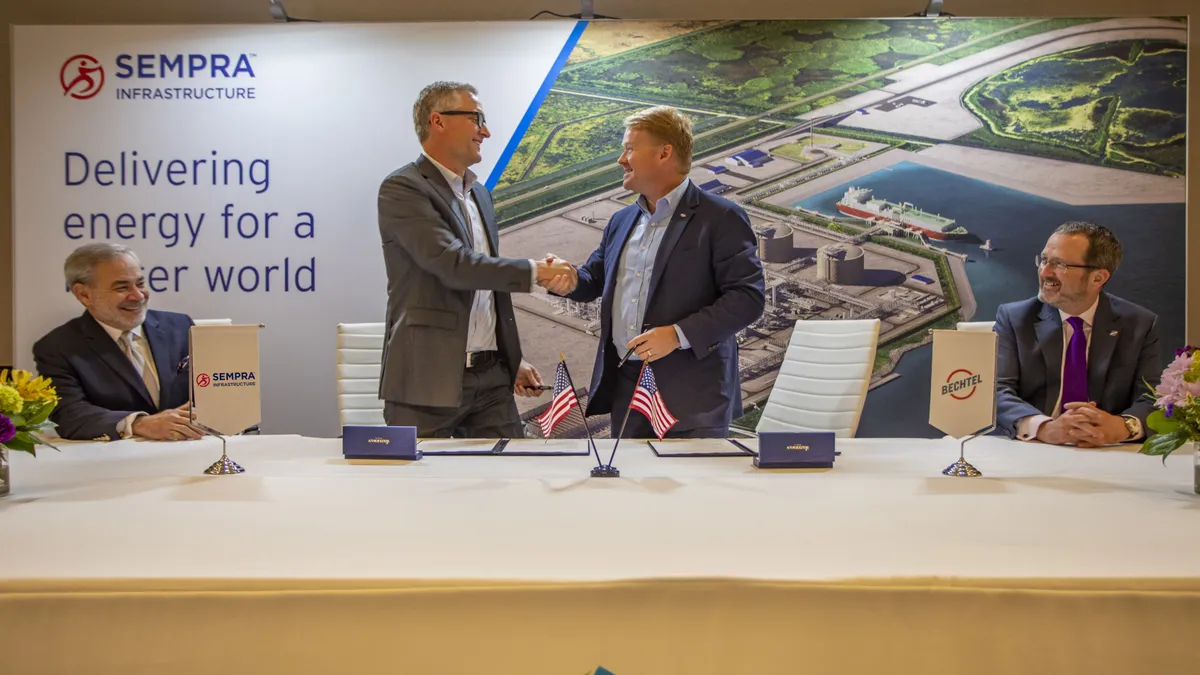Dive Brief:
- Bechtel’s work in Port Arthur, Texas, continues. The builder signed a fixed-price engineering, procurement and construction contract for the Port Arthur LNG Phase 2 project under development according to a July 18 news release.
- The award continues the Reston, Virginia-based contractor’s relationship with Sempra — the public utility company also tapped Bechtel in 2018 to build the $13 billion Phase 1 of the Port Arthur plant on Sabine Lake near Houston.
- As part of the Phase 2 deal, Bechtel will also perform the detailed commissioning, startup, performance testing and operator training activities for the project, per the release. The builder declined to comment on the Phase 2 cost.
Dive Insight:
The Port Arthur project’s Phase 2 received authorization from the Federal Energy Regulatory Commission in September 2023, per the release.
The scope of the agreement also includes the ability to conduct pre-final investment decision work to better assure project cost and schedule certainty.
The project will contain two liquefaction trains capable of producing approximately 13 million tons per annum of liquified natural gas, which would double the total liquefaction capacity of the facility to 26 million tonnes per annum, according to the release.
Phase 1 is currently under construction and consists of trains 1 and 2, as well as two LNG storage tanks and associated facilities. Progress is moving forward and Sempra expects that commercial operation dates for train 1 and train 2 are 2027 and 2028, respectively.
"Building on the success of Port Arthur LNG Phase 1, which is currently under construction, the Phase 2 project is expected to further enhance the supply of secure, abundant and reliable U.S. natural gas to customers around the globe,” said Justin Bird, CEO of Sempra Infrastructure, in the release.
The federal government recognizes Port Arthur as an energy hub. The U.S. Army Corps of Engineers selected Broomfield, Colorado-based Flatiron to build $102 million in surge protection upgrades to three pump stations in the region, to protect them from extreme weather and rising sea levels.













